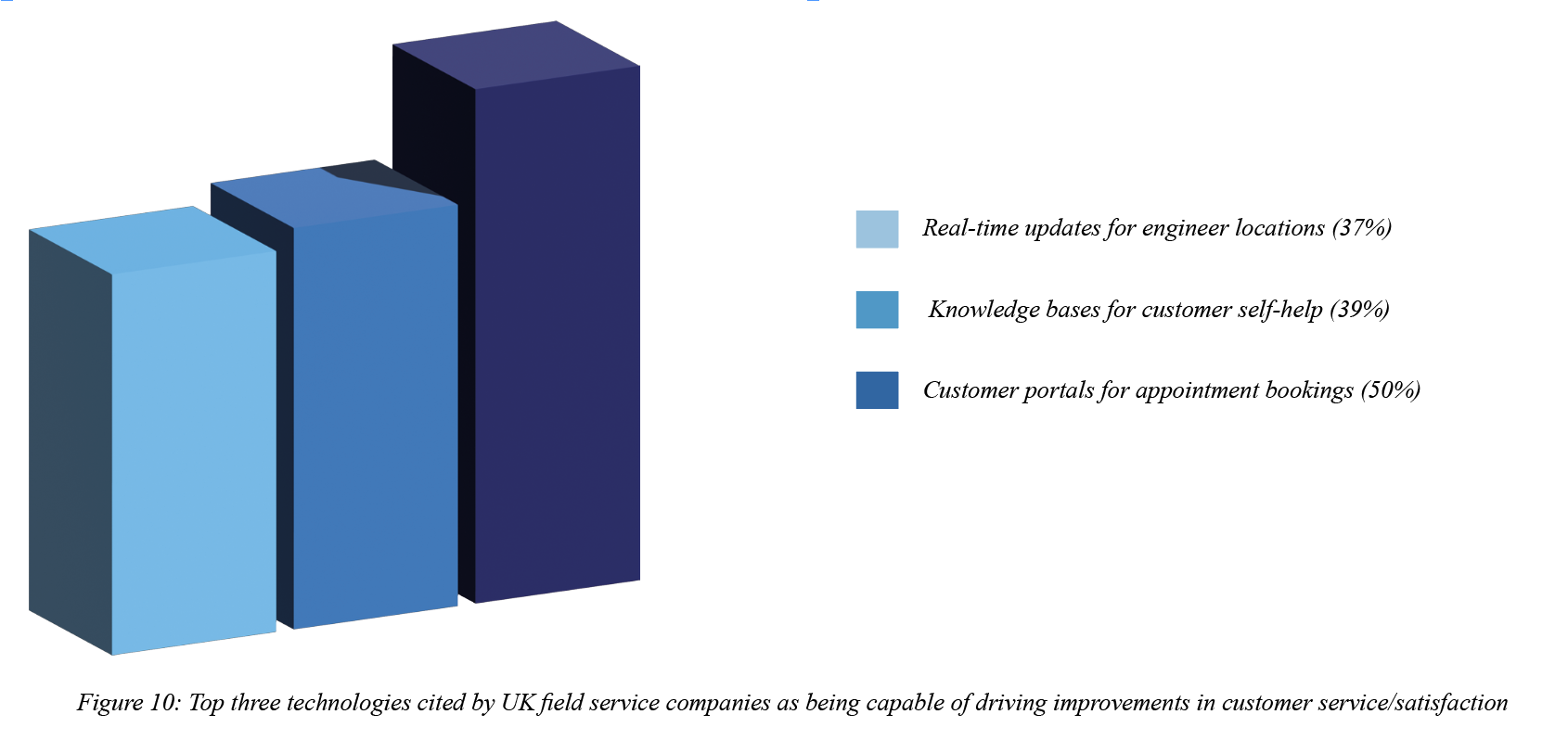Tools Used That Can Drive Improvements in Customer Satisfaction
In the next in our series of comparative analyses across a global study and a follow-up UK study hosted by Field Service News Research in partnership with HSO, we look at the tools that can drive improvements in customer satisfaction amongst field service companies.
So far in both the original report on the global study and this comparative report focusing on the additional data from the UK study, we have seen how the findings in both studies identified the critical importance of CSAT metrics within field service operations. We have also explored the most prevalent tools being used to measure CSAT and how field service companies are collecting customer feedback.
While this is all beneficial information, it is also very reactive analysis. It helps us understand how companies are monitoring the past performance of their service operation in terms of customer service.
However, in both studies, we also wanted to understand how field service companies are pro-actively driving improvements in their field service operations both today and in the future.
With this in mind, we asked our respondents to identify which tools they are using to drive improvements in customer service. The results from the global study were illuminating in that there was clear evidence of the widespread use of technology in this regard.
We listed the following technologies and asked our respondents to list any that they used and felt would drive customer service standards:
- Customer portal for appointment booking
- Chat-bots
- Omni-channel contact centres
- Real-time updates of engineer location for customers
- Remote service offering (Augmented Reality)
- Remote service offering (Video)
- Dynamic Scheduling
- Engineer access to parts ordering
- Integrated CRM
- Artificial Intelligence enhanced triage
- Knowledge base for customers self-help
Of these technologies the most commonly cited within the global study were knowledge base for customers’ self-help (48%), integrated CRM (41%), customer portals for appointment booking (39%), engineer access to parts ordering (39%) and remote service offering (video) (38%). (Fig 9. below).

However, close to a third of companies also stated that they were using Remote Service Offerings (Augmented Reality) (32%), Dynamic Scheduling (30%), and real-time updates of engineer location for customers (30%).
Technologies that would be deemed more advanced, however, were still reasonably prevalent, with between a quarter and a fifth of companies stating they have the following in use: Omni-channel contact centres (24%), Artificial Intelligence based triage (21%) and chat-bots (18%).
So how does the data from the UK data line up against the global study?
In the UK study, the top three technologies cited were customer portals for appointment bookings (50%), knowledge bases for customer self-help (39%), real-time updates for engineer locations (37%). (Fig 10. Below)

Other technologies that also scored highly were engineer access to parts ordering (32%), dynamic scheduling (31%), and remote service offering (27%).
In our original report on the global study, we noted the weighting of technologies centred around giving the customer more control within the service cycle. The presence of both customer-centric knowledge bases and also customer portals would indicate that this is a trend that has firmly taken root within service strategies.
Reflecting the UK data, this appears to be even more pronounced with customer portals scoring higher than any other technology across both studies.
Indeed, it could be inferred from the UK data that field service companies in the UK are prioritising investment in technology that is centred around firstly giving their customers the tools to be in control of service themselves (such as customer portals and knowledge banks) and then ensuring that the delivery of service is a quick, seamless and transparent as possible (dynamic scheduling, engineer parts ordering, real-time engineer location).
In our report on the global data, we also noted the prevalence of remote service delivery and how established within our sector this has become.
In the global data, when we look at the two remote service offering options available (video and augmented reality), 70% of field service companies within this response set appear to have remote service capabilities. In the UK, this number is significantly lower at 46% . However, for almost half of UK-based field service organisations, having the remote-service capability is still a major development.
This is very much in line with previous Field Service News Research studies.
We have seen 76% of field service companies stating they have remote service capabilities in a benchmarking study from late 2020 and 83% of companies stating the same in a study focused on remote service at the beginning of 2021.
In terms of more traditional on-site field service delivery, the alignment of improving customer satisfaction levels and driving internal efficiencies is also evidenced from this set of study responses and is highlighted in both studies.
Engineer access to parts ordering, for example, will improve the Mean Time to Repair ratio, driving service costs down and CSAT up. Similarly, the use of Dynamic Scheduling will mean an improved technician utilisation rate for the service provider and reduce any potential delays to meeting customer appointments.
Finally, it is interesting to see that even the technologies that were not too long ago only utilised by a small group of bleeding-edge early adopters have become relatively prevalent in their use.
In particular, omnichannel contact centres and artificial intelligence-based triage are technologies that can enhance the customer experience and begin to connect the dots of the service cycle in a much more efficient and holistic manner (cited by 19% and 13% of UK respondents respectively).
In the next feature in this series we look at the general perception of maturity of customer-centric driven technologies amongst field service companies.
Want to know more and don’t want to wait? Field Service News subscribers can access the full 20 page comparative analysis report on the button at the top of this article.
This Field Service News Research study is sponsored by HSO

This content is available exclusively for FSN Premium members. Please either log-in or subscribe for access

Data usage note: By accessing this content you consent to the contact details submitted when you registered as a subscriber to fieldservicenews.com to be shared with the listed sponsor of this premium content HSO who may contact you for legitimate business reasons to discuss the content of this white paper.


